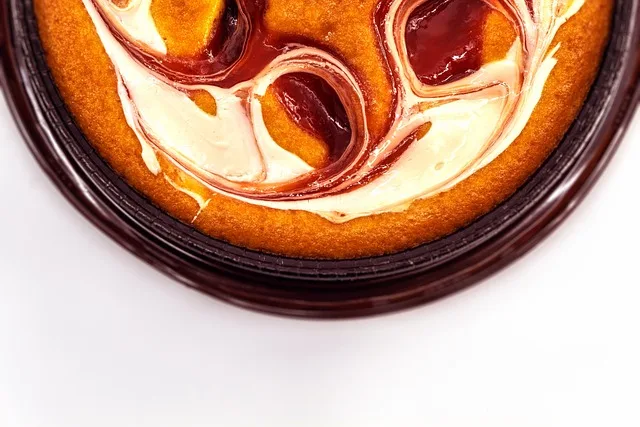First off, the prep work is where the magic—or the madness—happens. You’ll need to remove the cabinet doors, which can feel like a mini workout. And don’t forget to label everything! It’s like a puzzle, and you don’t want to be left with extra pieces at the end. Once that’s done, it’s time to clean and sand. Think of it as giving your cabinets a spa day. You want them to be smooth and ready to soak up that fresh paint.
Now, let’s talk about the actual painting. This is where the fun begins! But hold on—patience is key. You can’t just slap on paint and call it a day. You’ll want to apply a primer first, especially if you’re switching from dark to light colors. It’s like laying a solid foundation for a house; without it, your beautiful new color might just crumble.
And here’s a little secret: using a sprayer can make your life a whole lot easier. It’s like using a magic wand to transform your cabinets! But if you’re more of a brush-and-roller person, that works too. Just remember to take your time and apply thin coats. Nobody likes a drippy mess, right?
DIY Dilemma: The Real Challenge of Repainting Your Kitchen Cabinets
First off, you need to clear out your cabinets. It’s like a mini spring cleaning, but with the added challenge of finding a temporary home for all your kitchen gadgets. And then there’s the sanding. Oh, the sanding! It’s not just a quick once-over; it’s a meticulous process that can feel like you’re trying to smooth out a mountain range. But trust me, skipping this step is like trying to bake a cake without flour—it just won’t hold up.
Next comes the paint selection. Do you go for a bold color that screams personality, or a soft hue that whispers elegance? It’s like choosing an outfit for a first date; you want to make a statement but also feel comfortable. And let’s not forget about the actual painting. You might think you can just slap on a coat and call it a day, but oh no! You’ll need multiple coats, and each one requires drying time. It’s a test of patience, and if you’re anything like me, waiting is not your strong suit.
And then, there’s the final touch—sealing the deal with a protective finish. It’s like putting on a raincoat before heading out; you want to ensure your hard work doesn’t wash away. So, while the idea of repainting your kitchen cabinets is enticing, the reality is a mix of excitement and a few headaches along the way. Are you ready to take on the challenge?
From Drab to Fab: How Difficult Is It to Repaint Your Kitchen Cabinets?
First off, let’s talk about prep work. This is where the magic begins. You wouldn’t paint a wall without priming it first, right? The same goes for cabinets. Start by removing all the hardware and giving the surfaces a good clean. Think of it as giving your cabinets a refreshing shower before their big makeover. Once they’re squeaky clean, a light sanding will help the paint stick like glue.

Now, onto the fun part—choosing your color! Do you want a bold navy blue that screams sophistication, or a soft pastel that whispers tranquility? The choice is yours! Just remember, the color you pick can set the mood for your entire kitchen.
When it comes to painting, a good brush or roller can make all the difference. It’s like choosing the right tool for a job; a good chef wouldn’t use a butter knife to chop vegetables, right? Apply thin coats to avoid drips and ensure a smooth finish. Patience is key here; let each coat dry completely before adding the next.
The Ultimate Guide to Repainting Kitchen Cabinets: Is It Worth the Effort?
First off, think about the cost. A full kitchen remodel can drain your wallet faster than you can say “open concept.” Repainting your cabinets, on the other hand, is like giving your kitchen a facelift without the hefty price tag. You can transform those tired, outdated cabinets into something that feels modern and fresh, all while keeping your budget intact.
Now, let’s talk about the time investment. Sure, it’s not a quick weekend project, but it’s not a never-ending saga either. With a little planning and the right tools, you can tackle this project in a few days. Plus, the satisfaction of seeing your hard work pay off is like icing on the cake.
And what about the mess? Yes, there will be some paint splatters and maybe a few fumes, but think of it as a creative adventure. You’re not just painting; you’re crafting a space that reflects your personality. It’s like turning a blank canvas into a masterpiece, one brushstroke at a time.
Transform Your Space: The Hard Truth About DIY Kitchen Cabinet Makeovers
First off, let’s talk about time. You might think you can whip up a stunning cabinet transformation in a day, but hold your horses! Between sanding, priming, and painting, you could easily find yourself in a multi-day saga. It’s like planning a dinner party and realizing you forgot to defrost the chicken—suddenly, you’re scrambling!

Then there’s the skill factor. Sure, you’ve watched a few YouTube tutorials, but executing those techniques can be a whole different ball game. It’s like trying to bake a soufflé after only ever making toast. One wrong move, and you could end up with cabinets that look more “oops” than “wow.”
And let’s not forget about the materials. Quality paint and tools can add up quickly, turning your budget-friendly project into a wallet-busting endeavor. It’s like thinking you’re just going to grab a quick coffee, only to find yourself at a fancy café with a bill that makes your eyes water.
So, before you dive headfirst into that DIY kitchen cabinet makeover, take a moment to weigh the pros and cons. Sometimes, the hard truth is that a little professional help might save you time, money, and a whole lot of stress. After all, your kitchen deserves to shine, and sometimes that means knowing when to call in the experts!
Frequently Asked Questions
How Long Does It Take to Repaint Kitchen Cabinets?
The time required to repaint kitchen cabinets typically ranges from a few days to a week. This includes preparation, priming, painting, and drying time. Factors such as the number of cabinets, the type of paint used, and the complexity of the design can influence the overall duration.
What Are Common Mistakes to Avoid When Painting Cabinets?
When painting cabinets, avoid common pitfalls such as inadequate surface preparation, using the wrong type of paint, neglecting to apply primer, and skipping proper drying times. Ensure surfaces are clean and sanded for better paint adhesion. Choose high-quality paint suitable for cabinetry, and always apply a primer for a smooth finish. Allow sufficient drying time between coats to prevent smudging and ensure durability.
How Difficult Is It to Repaint Kitchen Cabinets Yourself?
Repainting kitchen cabinets can be a manageable DIY project, but it requires careful preparation and attention to detail. The difficulty level depends on your experience with painting and the condition of the cabinets. Proper cleaning, sanding, and priming are essential for a smooth finish. If you follow the right steps and use quality materials, you can achieve professional-looking results.
What Tools Do I Need for DIY Cabinet Painting?
To successfully paint cabinets yourself, gather essential tools including a high-quality paintbrush and roller for smooth application, painter’s tape for clean edges, sandpaper for surface preparation, a primer for better paint adhesion, and a suitable cabinet paint. Additionally, have a drop cloth to protect your workspace and a paint tray for easy access to paint.
Can I Achieve a Professional Finish When DIY Painting Cabinets?
Achieving a professional finish when DIY painting cabinets is possible with the right preparation and techniques. Start by thoroughly cleaning and sanding the surfaces to ensure proper paint adhesion. Use high-quality paint and tools, such as brushes or sprayers designed for cabinetry. Apply multiple thin coats rather than one thick coat, allowing adequate drying time between applications. Finally, consider using a topcoat for added durability and a smooth finish.